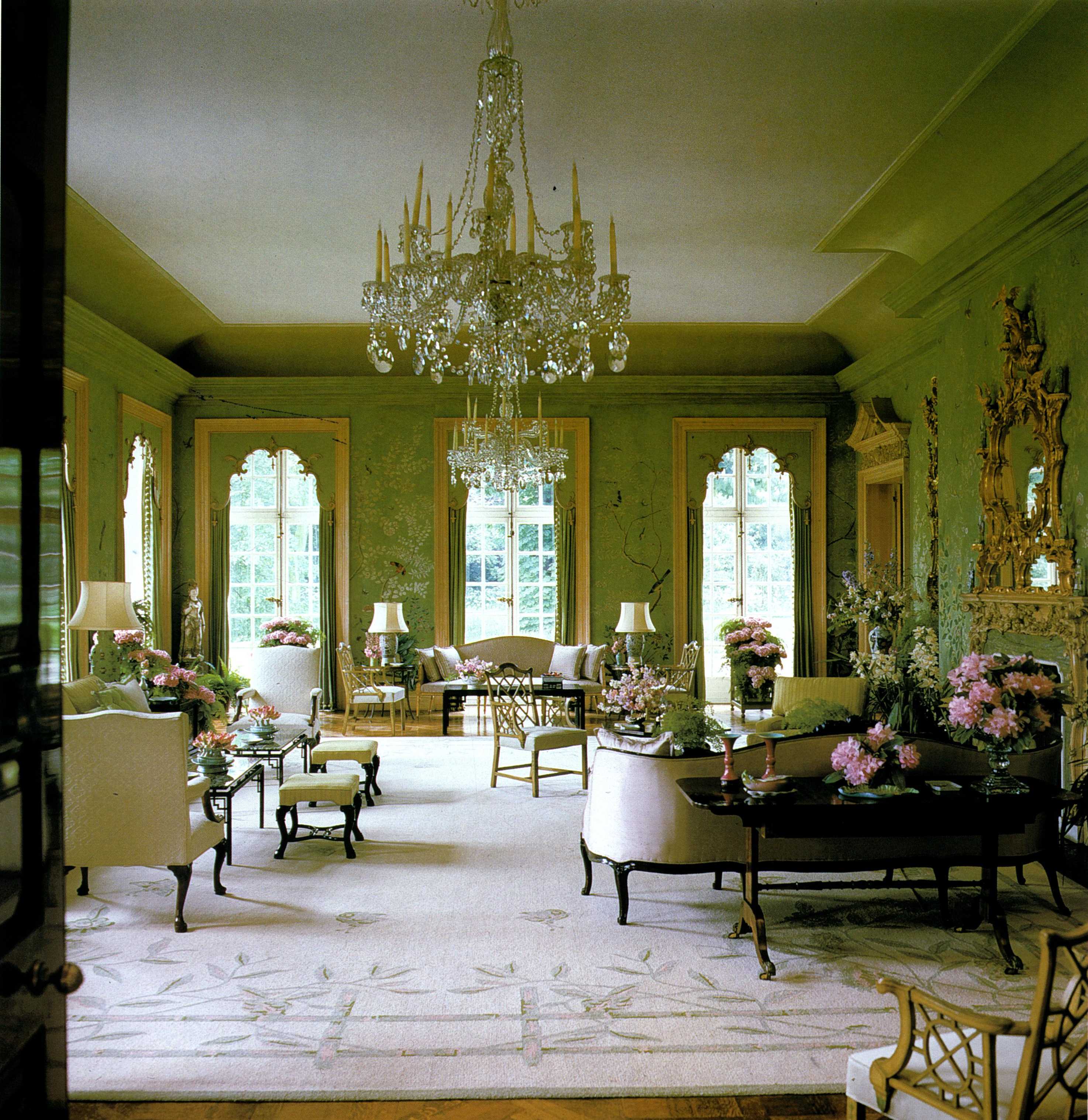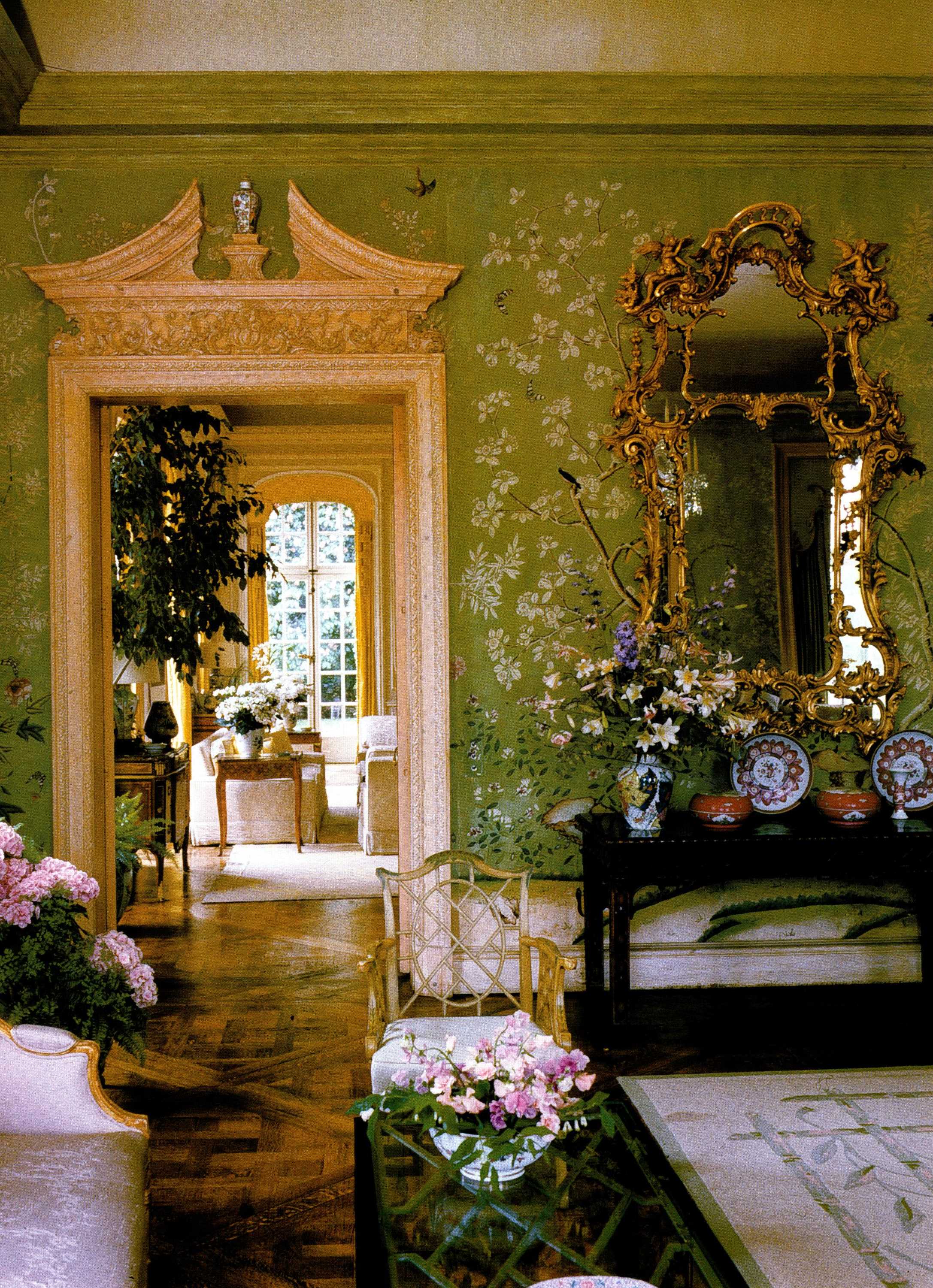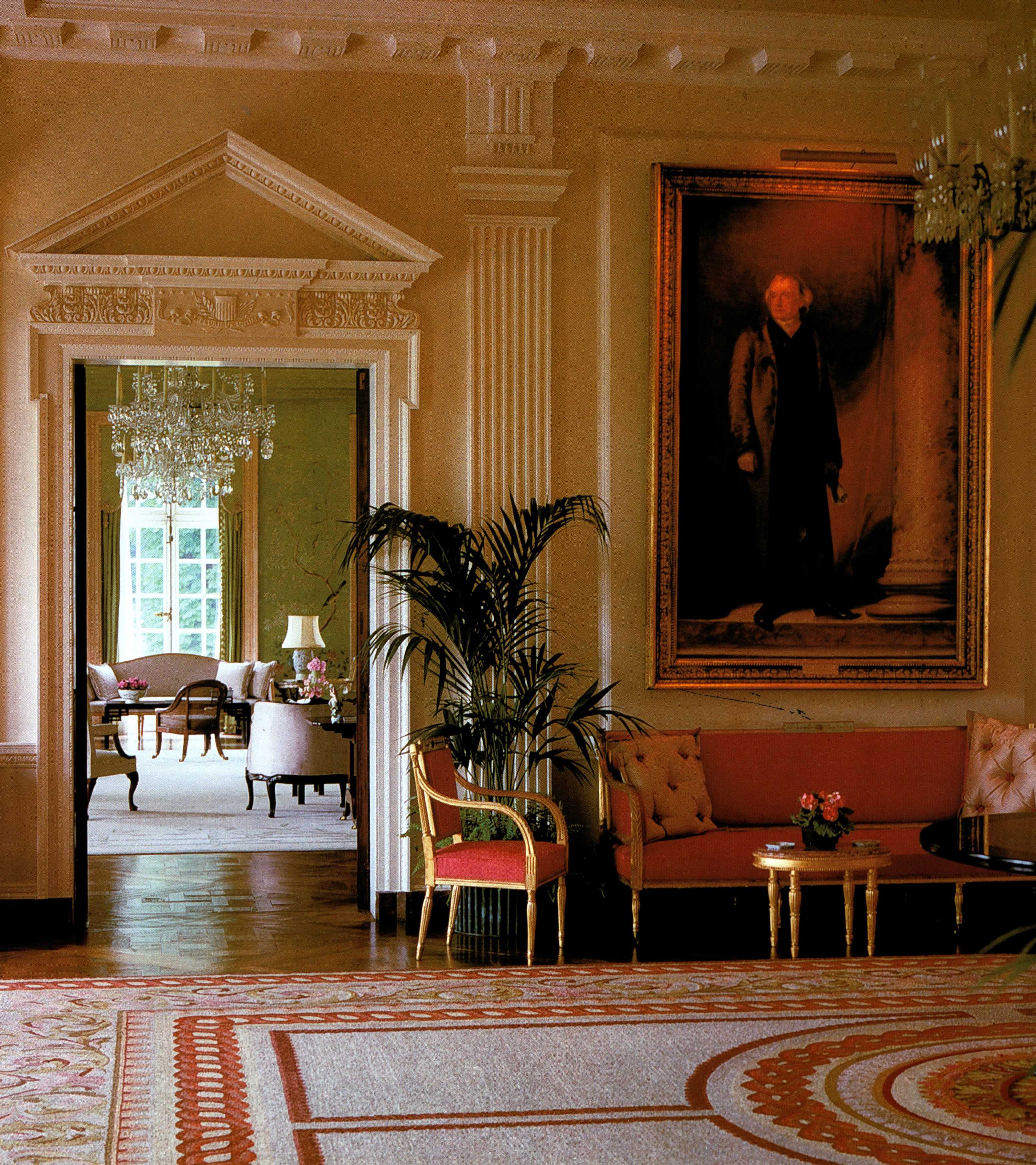Winfield House, London, England
Artist/Designer:
William (Billy) Haines
Project Location:
London, United Kingdom

Figure 1: In 1969, Walter Annenberg was appointed as the U.S. Ambassador to the Court of St. James by Richard Nixon. Moving to "Winfield House" in Regent's Park, London, Mr. and Mrs. Annenberg chose William (Billy) Haines and his associate Ted Graber to renovate and redesign the interiors of the Ambassador's residence. "The most breathtaking space in the house was the Garden Room. While Handes had been using hand-painted wallpaper during his entire career, what he chose for Winfield House was exceptional. He found the eighteenth-century paper on the walls of an Irish castle, Townley Hall in County Louth, and had it removed and shipped to New York for cleaning and Hong Kong for restoration. The wallpaper's colorful birds and butterflies explored robust white chrysanthemums and pink peonies. When McCall's (the magazine) visited, the writer noted that 'the wallpaper is said to be worth as much as the house itself'".--from Class Act: William Haines, Legendary Hollywood Decorator, page 193.
(
Photographer: from Class Act: William Haines, Legendary Hollywood Decorator, page 192 )

Figure 2: "Over the doorways, Haines installed late-seventeenth-century English pine architraves and pediments that evoked the feeling of Chinoiserie, one of Haines' enduring passions."--from Class Act: William Haines, Legendary Hollywood Decorator, page 193.
(
Photographer: from Class Act: William Haines, Legendary Hollywood Decorator, page 193. )

Figure 3: "Haines decorated the main drawing room in shades of gray, white, and lemon yellow to remind the Annenbergs of their beloved winter home in the California desert (also designed by Haines and named Sunnylands). When the house underwent major structural updates in the late 1990s, which required ripping up floors and walls, it was decided that the reception rooms would be restored as Haines had first designed them, because they were so perfect."--from Class Act: William Haines, Legendary Hollywood Decorator, page 194.
(
Photographer: from Class Act: William Haines, Legendary Hollywood Decorator, page 194 )

Figure 4: "Haines used some of the same set-building techniques that he had learned at MGM to give a stately air to the reception room. Fluted Roman doric columns and pilasters were combined with fine architectural detail, such as plaques above the mahogany doors bearing the symbols of the U.S. government in relief. Haines helped the Annenbergs select the eighteenth-century George III gilt-wood furniture, which, like almost all of the furnishings, were the Annenbergs' permanent, tax-deductible gift to the embassy. Through Friends of Art and Preservation in Embassies, Lee Annenberg has ensured that Winfield House remains an enduring statement of American Heritage."--from Class Act: William Haines, Legendary Hollywood Decorator, page 190.
(
Photographer: from Class Act: William Haines, Legendary Hollywood Decorator, page 191. )
Style/Period(s):
Revival Styles
Primary Material(s):
Wood, Wall Paper, Paint, Fabric, Textile
Function(s):
Residential Structure
Related Website(s):
Significant Date(s):
1969, 20th Century
Additional Information:
Schifando, Peter and Jean H. Mathison. Class Act: William Haines, Legendary Hollywood Decorator (New York: Pointed Leaf Press, 2005).
Mann, William J. Wisecracker: The Life and Times of William Haines, Hollywood's First Openly Gay Star (Penguin Books, 1998).
Mann, William J. "William Haines: Creator of a Smart New Look for the Hollywood Scene", Architectural Digest, January 2000.
http://www.williamhaines.com
Winfield House is located in Regent's Park in London. After a fire destroyed the original house on the property, Winfield House was built in 1936 by the American heiress Barbara Hutton.



